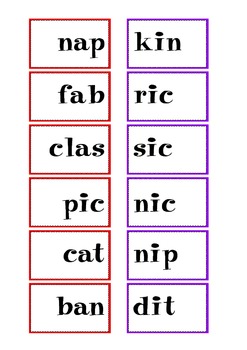

Why? Not all one syllable words are the same. Once taught a /p/, children with a motor-planning component to their speech disorder can say the /p/ in some one-syllable words, but not others. Controlling syllable shape is one way to create an appropriate list of target words for children with CAS and other children with a motor-planning component to their speech problem.Ĭhildren who have no motor-planning problems can learn a new sound like /p/, practice it at the beginning and ends of words, practice it in phrases and sentences, and then use it in conversation. As a therapist, you always want to find that balance between stimuli that are demanding enough to teach new skills, but not so demanding that the circuit breaker trips and the student only experiences repeated failure. A new sound or sound combination takes more effort (putting more demand on the system) than one that has been practiced many times. Consonants put more stress on the system than vowels. Words with many sounds are more demanding than words with fewer sounds. If the demands are high, the circuit breaker is overloaded and word production fails. If the demands on the circuit are low, the breaker does not trip and the word is produced correctly. Pretend that children with motor-planning problems have a circuit breaker somewhere in their system between their brain and their mouth.

For most people, this process is automatic and effortless, but for children with CAS, each sequence must be taught and then practiced over and over again until it becomes automatic. Why does syllable shape matter when choosing words for speech therapy?Ĭhildhood Apraxia of Speech (CAS) is a neurological speech disorder that disrupts the sequencing, transmission, and execution of the motor-planning commands of speech. JIPA is indexed in a number of leading databases, including Web of Science (AHCI & SSCI) and Scopus.Learn why it is necessary to control syllable shape in your target words and how. JIPA publishes online audio files to supplement the text of the Illustrations and encourages the submission of such supplementary materials for all contributions, including the submission of manuscripts with embedded audio files.

JIPA is especially concerned with the theory behind the International Phonetic Alphabet and publishes papers, known as Illustrations of the IPA, that use the alphabet for the analysis and description of the sound structures of a wide variety of languages. As well as publishing research on phonetics, laboratory phonology and related topics, the journal welcomes submissions on practical applications of phonetics to areas such as phonetics teaching, speech therapy, and computer speech processing, provided the focus of such submissions is primarily linguistic in nature.

JIPA also publishes review papers on current topics in phonetic theory, analysis and instrumentation, and invites proposals for special issues on topics related to its subject matter. JIPA encourages submissions in both well-known and un(der)documented linguistic varieties, including minority and endangered languages. The Journal of the International Phonetic Association (JIPA) is a forum for original research in the fields of phonetic theory and description and their phonological, typological and broader implications. We propose an alternative view of suprasegmental organization, and we suggest that more work is needed in order to understand the phonetic bases of suprasegmental structure. We suggest that this greater parity may be a necessary constraint on languages which have multiple places of articulation (six in the case of the Aboriginal languages studied here). Using F2 and F3 measures of the consonant, and locus equation measures, we find that CV does show more stability than VC in the English speakers' data, but that for the Aboriginal language speakers' data, there is a parity between the CV and VC measures. We examine real-word data from one speaker of Arrernte, five speakers of English, and three speakers each of Yanyuwa and Yindjibarndi (these are two other Aboriginal languages). In this study, we set out to see if there is any acoustic phonetic basis to Breen & Pensalfini's claim. Recently however, Breen & Pensalfini (1999) have challenged the primacy of the CV syllable in phonological theory with data from Arrernte, an Aboriginal language spoken in central Australia. Traditionally, phonological theory has held that the CV syllable is the basic syllable type across the world's languages.


 0 kommentar(er)
0 kommentar(er)
